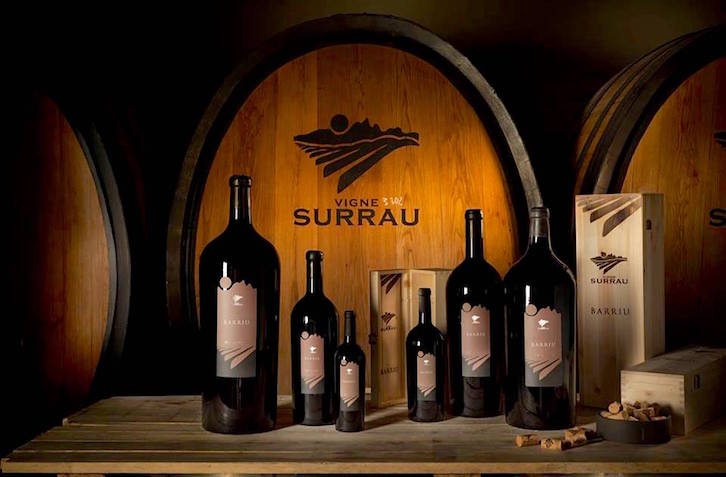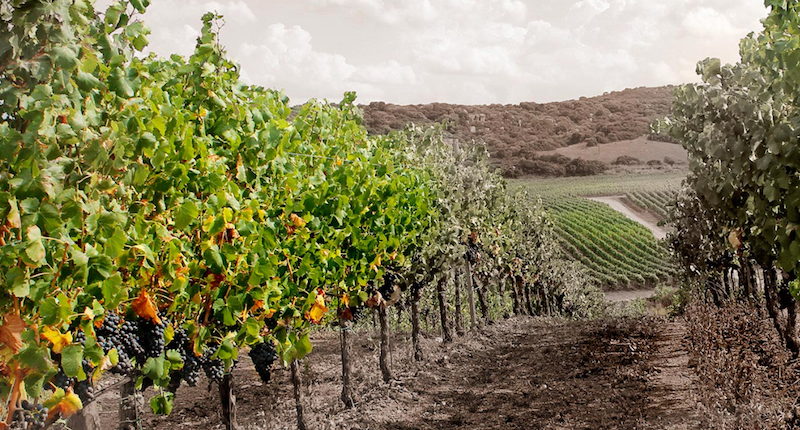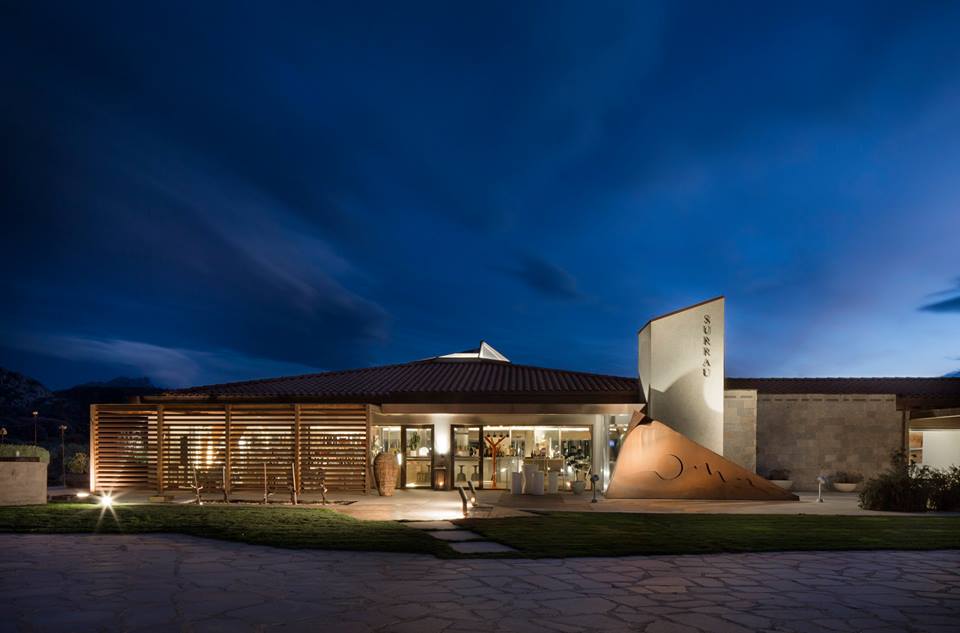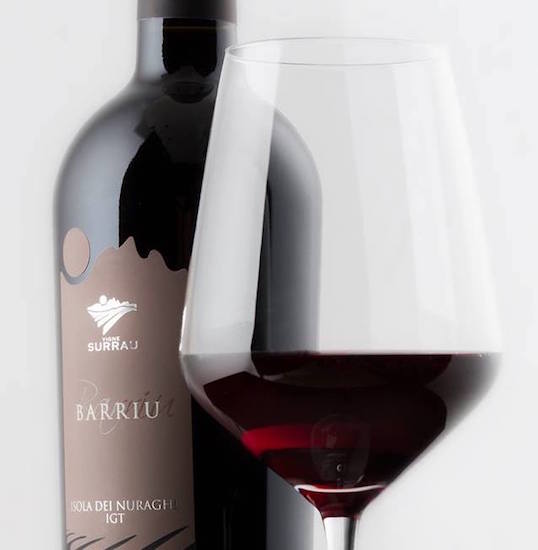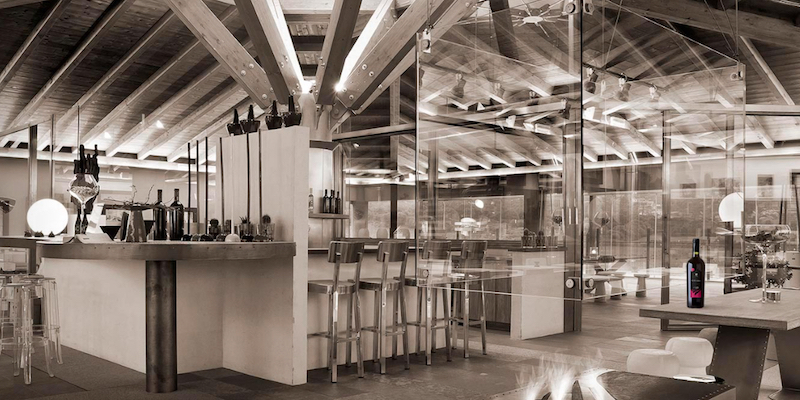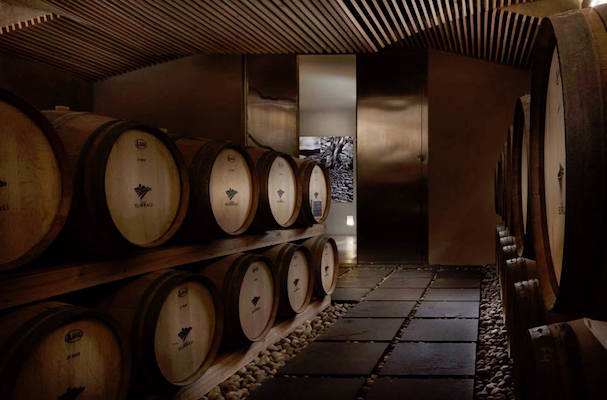My first encounter with the mistral was as an undergraduate in Languedoc in the South of France where the fabled Mediterranean wind was regarded with a healthy dose of respect. Meaning “masterly” in the Occitan dialect, the strong sustained wind dries stagnant water and blows away dust, resulting in the clarity of light so beloved by artists drawn to the South of France.
Similarly, in Sardinia, the mistral is honored as an integral factor in the production of the Mediterranean island’s noteworthy wines. Sardinian viticulture has its origins in the Nuragic era, a name that derives from the Bronze Age tower-fortresses that dot the landscape of the Mediterranean’s second largest island. Archeological findings that date from the 2nd to the 4th centuries A.D. include wine presses, grape-pressing baths, vessels, and oenological workshops—as well as grape seeds that represent some of the same species used today.
A young winery with an old soul, Vigne Surrau occupies 125 acres of vineyards located along Costa Smeralda (Emerald Coast) in Gallura in the northeastern part of Sardinia. Situated a few miles from the sea, the vineyards benefit from sunny valleys and the cleansing properties of the mistral blowing from the Strait of Bonifacio. In the case of Sardinia, the mistral enables healthy grape clusters, as well as a distinctive sapidity that reflects the region’s Mediterranean scrub (such as maquis) and the granite sands of the hillsides.
This combination of wind, granite, and indigenous scrub contributes to the distinctive qualities of Vigne Surrau’s wines, which are produced with native and international varieties such as Vermentino, Cannonau, Carignano, Muristellu, and Cabernet Sauvignon.
As ambassadors of Gallura, the well-balanced wines of Vigne Surrau exalt Sardinia’s viticulture heritage and honor the local aphorism In sa cuba minore su binu bonu—which translates to “Great wine is to be found in small barrels.”
Vigne Surrau Sincaru Cannonau di Sardegna 2014: In the local dialect, the word “sincaru” means “sincere” or “pure,” which seems fitting for this award-winning wine made from 100% Cannonau grapes. The vines are grown on granite soils, which give the wine a nice minerality and great balance. Ruby red in color with a garnet blush, the bouquet is intense with ripe cherry. The lovely mouth feel is warm and soft with floral notes of violet and lavender. A voluptuous wine at 14.5% with low tannins, Sincaru is mature enough to complement aged cheeses. Offered at a reasonable price point, this highly-ranked wine, which has been the recipient of numerous awards for wines of this region, is nearly the next best thing to being seated on a hillside garden in Sardinia.
Vigne Surrau Barriu 2013: A beauty in the bowl, this elegant deep ruby red wine has been aged for 18 months in French oak barrels before resting in the bottle for approximately six months thereafter. The equal blend of Cannonau, Carignano, and Cabernet Sauvignon, plus 10% Muristellu, produces a bouquet redolent of ripe red jams with a vegetal note of Mediterranean maquis. On the mouth, this 14.5% wine feels smooth with a lingering finish that makes it a perfect complement for hard cheeses or an autumn cassoulet. Sip and enjoy—while reflecting on the fact that Carignano was probably introduced in Sardinia by the Phoenicians.
Vigne Surrau Branu 2015: The grape most associated with Sardinia, Vermentino arrived in Gallura near the end of the 19th century where it acclimated immediately to the granite terrain. The resultant Vermentino di Gallura is notable for its minerality and freshness, qualities that are retained in Vigne Surrau’s Branu. Produced from 100% Vermentino and bottled young, Branu is bright straw yellow in color with flecks of green-gold. Floral and aromatic herbal notes commingle with ripe fruit. At 13%, this wine works well as an aperitif or accompanied by a dozen briny oysters. The taste is long: a bit of “scarpetta” on slate, evocative of that bit of crust you use to sop up the sauce, which, in this case, might be a fragrant bouillabaisse. Reasonably priced, you can’t go wrong with an award-winning bottle of Branu.
Vigne Surrau Surrau 2013: An intense ruby-red blend of equal parts Cannonau and Carignano, with 10% Muristellu (aka Bovale Sardo), Surrau 2013 has a pleasingly warm mouth feel with elegantly-balanced tannins. This fragrant wine, redolent of ripe blackberry and herbal shrub, is one that you want to inhale and savor, as much as you want to taste it on your palate where it lingers with a pleasing and persistent peppery finish. A lovely starter, Surrau complements antipasti and pecorino, as well as a nice carbonara or cacio e pepe.
With wines such as these, notable for their smooth elegance, perhaps it’s no wonder that, according to folklore, Bacchus favored the Surrau Valley.

